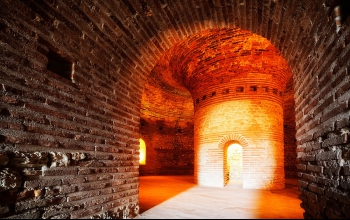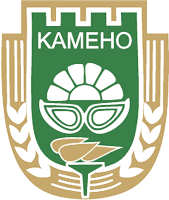Pomorie Hive Tomb
2 km southwest of Pomorie, the ancient Anhialo is the largest Thracian beehive tomb in Bulgaria. It is in the bowels of the "Hollow Mound", which is 8 m high and 60 m in diameter.The Pomorie tomb was discovered in late 1888. It is entered from the south by a 22 m long corridor (dromos), covered with a 2.40 m high semi-cylindrical vault. The double-leaf door is locked from the inside, showing signs of repeated opening and closing. From the dromos you can reach directly into a huge semi-dark round hall. In the center of the hall there is a hollow round column with an entrance from the south of the dromos, covered with an arch.
The round hall is covered with a semi-cylindrical vault, its diameter is 11.56 m, and the height at the zenith of the vault is 5.50 m. The column rose above the vault and rose above the top of the mound.
In the round perimeter wall, at a height of about a meter above the floor, there are 5 blind rectangular niches, ending with arches, arranged so as to form a pentagram shape. There are three small square openings in the arch - vents. In them were installed ceramic water pipes with a diameter of 0.25 m, which pierce the arch and the mound. The opening above the dromos is facing south.
During the spring and autumn equinox, the sun rises at its zenith at approximately the altitude from the latitude of Pomorie and the rays would illuminate exactly the threshold of the entrance to the base of the column.
The tomb is built of alternating layers of broken limestone blocks and brick belts, glued with pink mortar. The arches, in contrast to the rough-cast Roman concrete imperial buildings in Rome, are built extremely precisely entirely of bricks, which today amaze the visitors. In ancient times, the building was plastered on the inside and covered with paintings. It is difficult to say when the Pomorie tomb was built and how long it was used. Recently, it has been suggested that it was built by a representative of a Thracian royal dynasty during the Roman era. In any case, the tomb is Thracian in style, but was built in the Roman era.
Similar but unpreserved monuments, known only from engravings and descriptions, are the Pantheon, the mausoleum of Emperor Augustus, built in 28 AD, and the mausoleum of Emperor Hadrian, completed in 139 AD. All three buildings are located in the imperial capital Rome.



